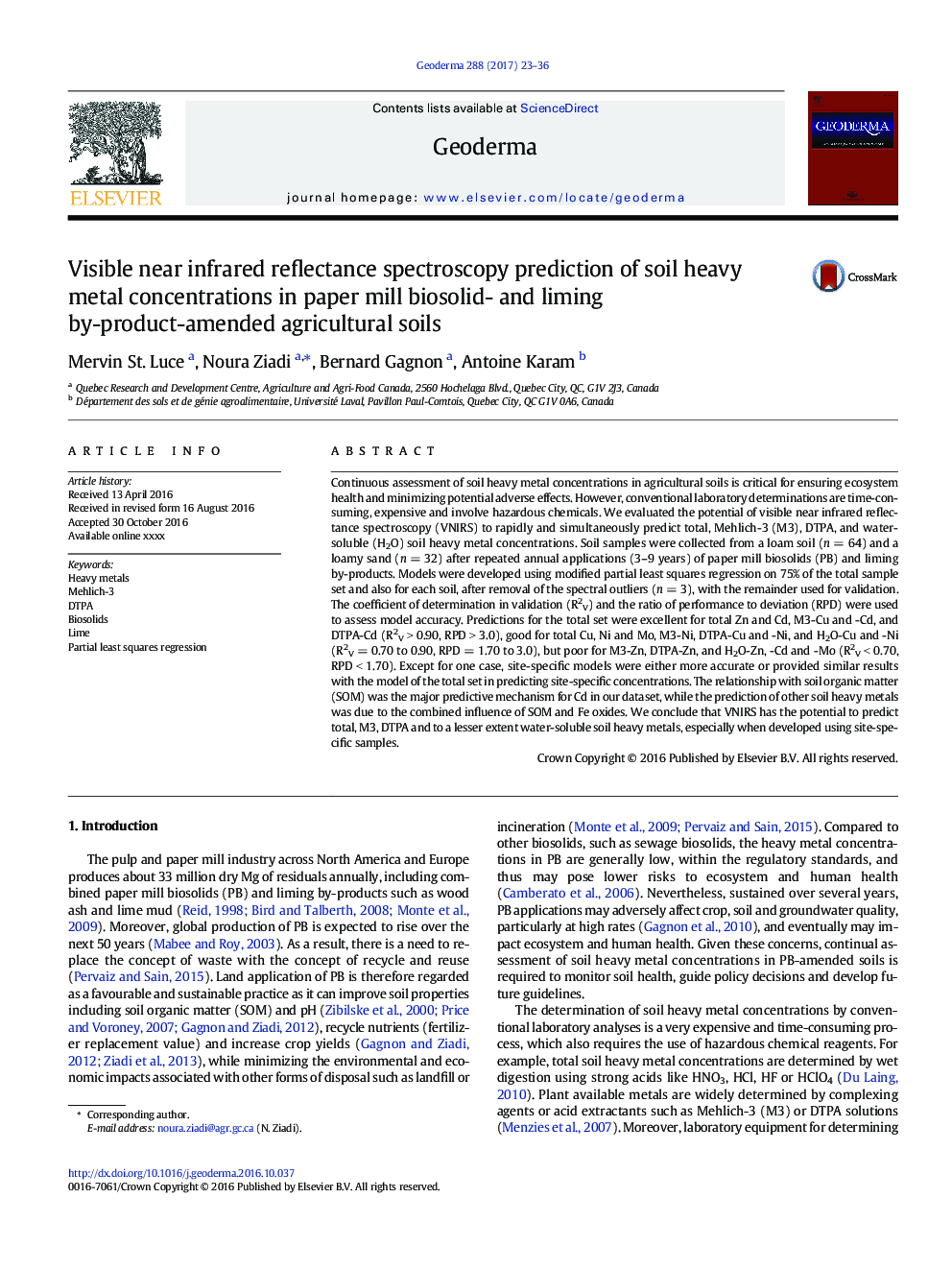| کد مقاله | کد نشریه | سال انتشار | مقاله انگلیسی | نسخه تمام متن |
|---|---|---|---|---|
| 5770483 | 1629429 | 2017 | 14 صفحه PDF | دانلود رایگان |
عنوان انگلیسی مقاله ISI
Visible near infrared reflectance spectroscopy prediction of soil heavy metal concentrations in paper mill biosolid- and liming by-product-amended agricultural soils
ترجمه فارسی عنوان
پیش بینی طیف سنجی بازتابی در نزدیکی مادون قرمز پیش بینی غلظت فلزات سنگین در گیاهان کاغذی آسیاب بادی
دانلود مقاله + سفارش ترجمه
دانلود مقاله ISI انگلیسی
رایگان برای ایرانیان
کلمات کلیدی
موضوعات مرتبط
مهندسی و علوم پایه
علوم زمین و سیارات
فرآیندهای سطح زمین
چکیده انگلیسی
Continuous assessment of soil heavy metal concentrations in agricultural soils is critical for ensuring ecosystem health and minimizing potential adverse effects. However, conventional laboratory determinations are time-consuming, expensive and involve hazardous chemicals. We evaluated the potential of visible near infrared reflectance spectroscopy (VNIRS) to rapidly and simultaneously predict total, Mehlich-3 (M3), DTPA, and water-soluble (H2O) soil heavy metal concentrations. Soil samples were collected from a loam soil (n = 64) and a loamy sand (n = 32) after repeated annual applications (3-9 years) of paper mill biosolids (PB) and liming by-products. Models were developed using modified partial least squares regression on 75% of the total sample set and also for each soil, after removal of the spectral outliers (n = 3), with the remainder used for validation. The coefficient of determination in validation (R2V) and the ratio of performance to deviation (RPD) were used to assess model accuracy. Predictions for the total set were excellent for total Zn and Cd, M3-Cu and -Cd, and DTPA-Cd (R2V > 0.90, RPD > 3.0), good for total Cu, Ni and Mo, M3-Ni, DTPA-Cu and -Ni, and H2O-Cu and -Ni (R2V = 0.70 to 0.90, RPD = 1.70 to 3.0), but poor for M3-Zn, DTPA-Zn, and H2O-Zn, -Cd and -Mo (R2V < 0.70, RPD < 1.70). Except for one case, site-specific models were either more accurate or provided similar results with the model of the total set in predicting site-specific concentrations. The relationship with soil organic matter (SOM) was the major predictive mechanism for Cd in our dataset, while the prediction of other soil heavy metals was due to the combined influence of SOM and Fe oxides. We conclude that VNIRS has the potential to predict total, M3, DTPA and to a lesser extent water-soluble soil heavy metals, especially when developed using site-specific samples.
ناشر
Database: Elsevier - ScienceDirect (ساینس دایرکت)
Journal: Geoderma - Volume 288, 15 February 2017, Pages 23-36
Journal: Geoderma - Volume 288, 15 February 2017, Pages 23-36
نویسندگان
Mervin St. Luce, Noura Ziadi, Bernard Gagnon, Antoine Karam,
